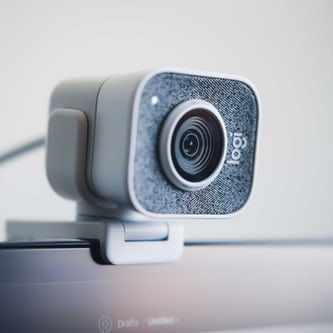
In conversations about cybersecurity, experts constantly stress the importance of covering webcams. From computers to tablets to phones, we have cameras on almost every device we use, and they’re as vulnerable to cyberattacks as anything else.
In the age of telecommuting and online lectures, programs like Zoom are gaining more users. You have to worry not just about your own business’ security but also the safety of software that uses our webcams.
Why Would You Cover Up Your Webcam?
Cybercriminals are after information, but that doesn’t mean they’re only targeting your files – webcams are also a gateway into information mining. Whether you’re in the privacy of your home or workspace, if software or a virus infiltrates your webcam, malicious hackers can see everything your webcam sees.
If you have a wireless webcam, it will likely have its own IP address and password. If a cybercriminal finds the IP address and can crack the password, they will access all the webcam’s functions.
Built-in webcams are incredibly convenient, but if your whole device gets a virus, a hacker can quickly take control of your webcam. When using your camera, your computer will turn on a light to notify you that it’s on, but malware can disable that function. Your camera – and microphone – could be in use without your knowledge.
How Do You Improve Your Webcam’s Security?
Covering your webcam is an easy, universal trick to keep your privacy and avoid any malicious spying, but that doesn’t necessarily protect your microphone. Taking some more thorough precautions can help protect your device.
- Get antivirus software and firewall protection. Security software can help protect your device from malware by denying access to your computer’s webcam without your permission. Firewalls can act as a filter to only allow legitimate access to your network.
- Update your software and operating systems. Updating your operating system can seem tedious, but keeping your devices up to date can be a protective measure against attacks. Older versions of your operating systems can easily exploit vulnerabilities for hackers to take advantage of.
- Avoid unfamiliar links and attachments. Phishing emails or links can be the gateway for cybercriminals to access your webcam – only open emails and links from trusted sources.
Bottom Line
Even if it seems a little paranoid to cover your webcam, it can be a practical, low-cost protective measure to protect your privacy. At the very least, it will keep your physical space private and prevent cybercriminals from picking up visual clues to access your information.